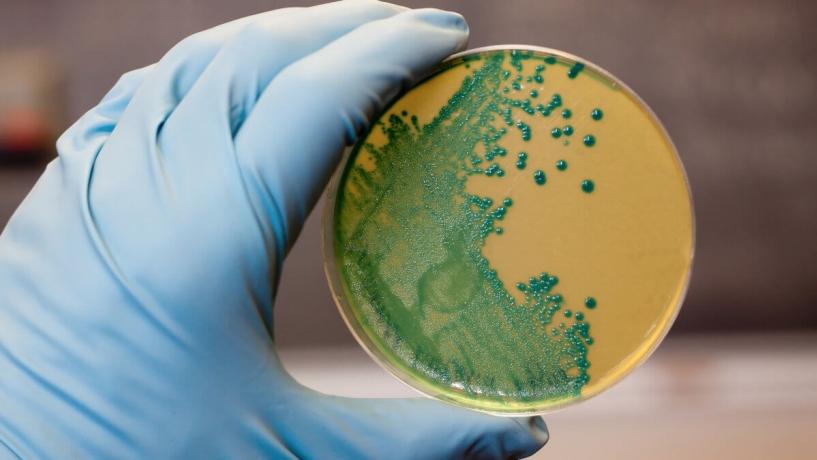
Listeria monocytogenes is frequently named as the cause of foodborne illness outbreaks. In this article we’ll investigate the history of Listeria, it’s characteristics, and what steps you can take to test for Listeria in your workplace.
About Listeria
Listeria is a bacterium that presents itself as short red chains when viewed under a microscope. There are many strains of Listeria but only one of these strains - Listeria monocytogenes - is known to cause foodborne illness outbreaks.
The term used for sickness caused by Listeria is Listeriosis. Symptoms include fever, headache, tiredness, aches and pains. Less common symptoms are diarrhoea, nausea and abdominal cramps. Listeriosis is particularly dangerous for pregnant women. Whilst pregnant women may experience only mild food poisoning symptoms, Listeriosis can result in miscarriage, premature birth or, in rare cases, stillbirth.
The most common foods in which Listeria is found include cold meat, cold cooked chicken, pre-packaged salad, soft cheese, unpasteurised dairy products, soft-serve ice-cream, pate and chilled seafood.
Listeria a very resistant bacterium, and can survive at temperatures where other bacteria die or stop reproducing.
History of Listeria
Originally called Bacterium monocytogenes, the present name for the pathogen, Listeria monocytogenes, was adopted in 1940 to honour the work of Joseph Lister in preventing infections in hospital environments.
At this time, Listeria monocytogenes was known to cause sickness in animals, but there were no recorded cases of animal to human transmission.
The first recognised case of transmission from animals to humans was in Canada in 1983. In this case, a batch of cabbages in winter storage were exposed to sheep manure containing the bacterium. When the cabbages were consumed, people fell ill with Listeriosis.
Diagnosis & Illness
It can be difficult for doctors to test for Listeriosis as the symptoms are so similar to other types of illnesses.
In mild cases, symptoms usually present within one day. In more severe cases it can take between 2 and 30 days for symptoms to develop. However, there have been reported cases of the symptoms of Listeriosis not presenting for 70 days after infection.
People with healthy immune systems rarely fall ill after consuming foods contaminated with Listeria monocytogenes bacteria. However, when Listeriosis is diagnosed, it should always be taken seriously as 20% of clinical infections result in death.
Those most at risk of becoming sick are pregnant women, newborn babies, the elderly and those with immune disorders such as HIV or cancer. In fact, pregnant women are 20 times more like to fall ill than a non-pregnant person with a healthy immune system.
In 2009, Virgin Blue in Australia served chicken wraps contaminated with Listeria on flights from Brisbane to New Zealand and Bali. Two passengers served the contaminated meals were pregnant women, both of whom went on to have premature births. Fortunately, both women and their babies survived without complications.
Resilience
Listeria bacteria are very resilient.
They can survive and reproduce at temperatures between 4°C and 42°C. This means that chilling or refrigerating products doesn’t necessarily stop growth.
Whilst many bacteria are killed by freezing, Listeria bacteria aren’t. Freezing does stop bacteria growth, but once a product is thawed, reproduction starts again.
And once Listeria is found in a workplace, it can be very hard to remove as they can grow in a multitude of locations. In 1998, a major outbreak of Listeriosis originating from a hotdog factory in the US was found to be caused by Listeria bacteria growing in air conditioning units.
Testing for Listeria
Testing for Listeria is usually done by taking swabs which are then sent off to laboratories for analysis. Results are usually returned within 24 to 48 hours.
It’s recommended to test for all strains of Listeria, not just Listeria monocytogenes. Although other strains of Listeria aren’t pathogenic, if they are found to exist, then it means that the conditions are right for the survival of Listeria monocytogenes - the pathogenic strain.
When taking the swabs for Listeria, vigorous effort is required. Listeria exists within microbiological biofilms on surfaces or equipment. It’s necessary to break through the biofilm so that the Listeria is reached by the swab. The swab should bend as the sample is being taken.
It’s important that a variety of surfaces are tested. As with the hotdog factory outbreak, Listeria adheres strongly to many surfaces within a food environment. Taking swabs simply from stainless steel workbenches may mean that the contaminated area is being ignored.
The levels of bacteria found during testing are measured using CFUs, or Colony Forming Units. In Australia, Listeria Monocytogenes must have a reading of 0 CFUs.
Preventing Listeria
The best way to prevent Listeria in the workplace is by effective cleaning and sanitising.
Listeria bacteria exist within a microbiological film that exists on surfaces and equipment. Using detergent for cleaning breaks apart the biofilm and exposes the bacteria. Always be vigorous when cleaning to ensure the biofilm is broken apart.
Once the bacteria are exposed, they’re then killed through sanitising.





